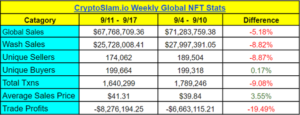In a bear market that has left many NFT projects struggling to find their footing, Zynga has emerged as a beacon of innovation. The gaming giant recently launched its first-ever NFT collection, Sugartown Oras, for their upcoming Web3 game. What sets Zynga apart is not just their entry into the NFT space, but the way they’ve done it: by offering their NFTs for free. This move has not only disrupted the market but also set a new standard for how NFTs can be introduced in the gaming industry.
One of the most significant challenges that NFT projects face is pricing their primary sale. It’s a delicate balance between attracting collectors and maximizing fundraising. Projects like Wreck League and Nakamigos have faced backlash for their pricing strategies, failing to mint out their NFTs or being subject to FUD (Fear, Uncertainty, Doubt). Zynga’s approach of offering free NFTs seems to have struck a chord with collectors, who are now willing to pay a floor price of 0.32 ETH (US$528) on the secondary market.

What makes Zynga’s NFTs so appealing? The answer lies in the mystery and untold potential that these NFTs hold. Zynga has hinted that Sugartown Oras is not just an NFT for a single game but a key to their broader NFT gaming ecosystem. This lack of a clear roadmap has fueled speculation, driving up prices on the secondary market. As the saying goes, “as soon as collectors learn what your product is, speculation ends and prices tumble.”
Zynga’s entry into the NFT space has likely caught the attention of other major game developers. Last week, Konami announced a new NFT game called Project Zircon, and Krafton, the developers behind PUBG, revealed a new game called Overdare. Both studios would do well to take notes from Zynga’s playbook, especially as the NFT market undergoes stabilization.
The Future of NFT Gaming: A Balanced Ecosystem
The NFT market has shown signs of stabilizing, with global sales, buyers, sellers, and total transactions remaining consistent with mid-2021 levels. As the industry matures, the approach taken by Zynga could serve as a blueprint for a more sustainable and inclusive NFT gaming ecosystem. Offering free NFTs not only attracts hardcore NFT enthusiasts but also paves the way for traditional gamers to explore the world of NFTs and crypto.
Conclusion
Zynga’s innovative approach to NFTs has set a new precedent in the gaming industry. By offering free NFTs, they have solved the pricing dilemma that has plagued many projects, while also fueling speculation and excitement in the market. As other major game studios prepare to enter the NFT space, Zynga’s strategy offers valuable lessons on balancing collector interest with sustainable growth. Only time will tell if this approach becomes the new standard, but for now, Zynga has undoubtedly changed the game.
Peep the Charts: NFT Global Stats Table
The NFT market is showing signs of stability, a far cry from the wild swings we were accustomed to. As we watch for long periods of stable numbers, it’s clear that the industry is reaching a new level of maturity, making Zynga’s entry all the more timely and impactful.


